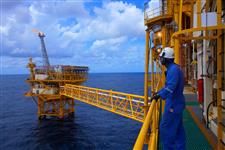
Decommissioning Landscape in the North Sea: Balancing Costs, Challenges, and Opportunities
Posted 09/08/2023 11:32
The North Sea's decommissioning sector saw a substantial expenditure of £1.6 billion in 2022, marking the highest yearly spending over the last five years. This financial insight is part of the latest report from the North Sea Transition Authority (NSTA), which examines the trajectory of decommissioning activities in the region.
Over the period from 2017 to 2022, the collective expenditure on decommissioning projects amounted to approximately £8 billion, and this financial commitment is set to persist with an annual forecast of around £2 billion for decommissioning endeavors during the next decade. This sustained investment not only presents a significant opportunity for skills and experience development within the North Sea's energy sector but also positions the supply chain to secure lucrative overseas contracts.
A notable highlight from the report is the dedication of UK suppliers to UK North Sea decommissioning projects. Approximately 70% of the work outlined in Supply Chain Action Plans (SCAPs) submitted to the NSTA in the past year is expected to be allocated to local suppliers. This aligns with the objectives of the North Sea Transition Deal, which aims to allocate at least half of decommissioning project expenditures to the domestic supply chain.
However, achieving future decommissioning targets presents challenges due to escalating demand for equipment, vessels, and services across various sectors and regions. The report highlights offshore wind as a sector that competes for similar resources, contributing to the inflationary pressures that have pushed the estimated cost of decommissioning to £40 billion.
Despite these challenges, the NSTA remains optimistic about the industry's ability to meet its cost-efficiency goals, which include reducing the estimated decommissioning cost to £33.3 billion by the end of 2028. The NSTA emphasizes the importance of collaboration between operators and the supply chain, proactive sharing of plans, and ensuring the timely availability of necessary resources.
In its efforts to support North Sea decommissioning endeavors, the NSTA is introducing new key performance indicators and benchmarks, developed in consultation with industry stakeholders. These metrics are expected to provide a more comprehensive understanding of decommissioning project planning and execution, thereby identifying avenues for improved overall performance and cost-efficiency gains.
The NSTA's report underscores a promising opportunity in the horizon, estimating a total investment of approximately £21 billion in decommissioning projects up to 2032. This translates to an annual allocation of roughly £2 billion over the next ten years, empowering the region to foster skills and experience in decommissioning. This strategic approach positions the North Sea as a global leader in retiring oil and gas infrastructure while contributing to the broader transition toward cleaner energy solutions.
Pauline Innes, NSTA Director of Supply Chain and Decommissioning, emphasizes the significance of the coming decade and urges companies to intensify collaboration and cost-efficiency efforts. The industry's challenges and opportunities are interconnected, necessitating a strategic approach to ensure sustainable and profitable outcomes. As decommissioning remains pivotal to the North Sea's future, operators and suppliers are called upon to adapt, innovate, and collaborate to meet the evolving demands of the energy sector.
In essence, the ongoing decommissioning efforts in the North Sea not only reflect the sector's commitment to responsible legacy infrastructure management but also signify its potential to catalyze economic growth, innovation, and the global transition to cleaner energy sources."








